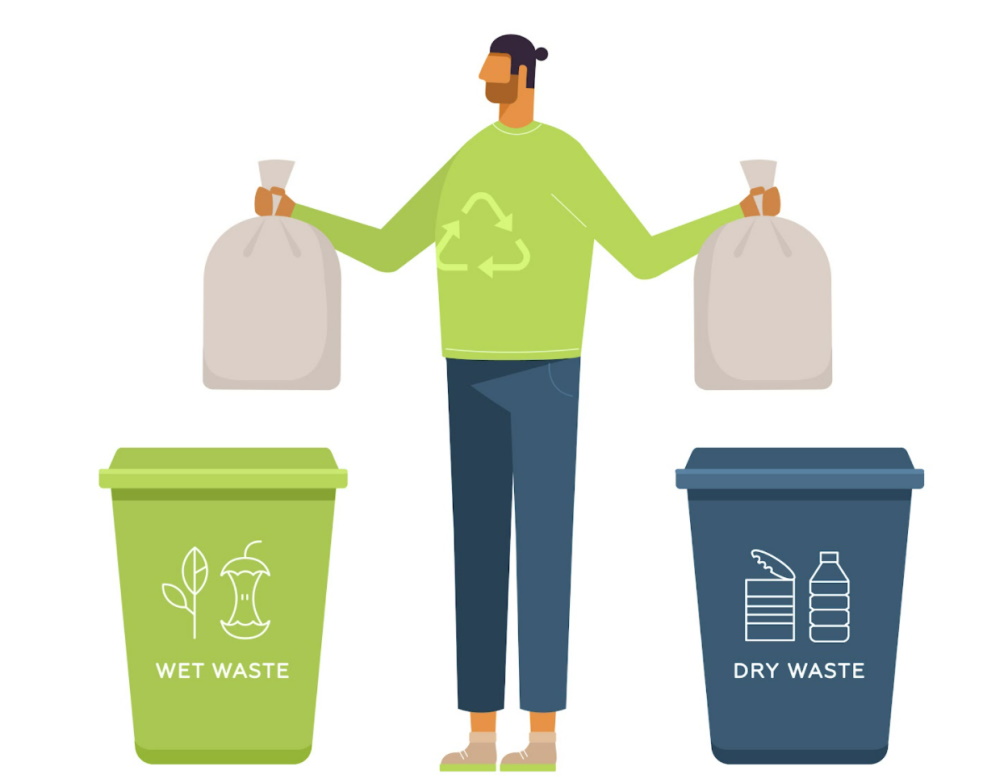5 Tips For Segregating Waste At Home

Waste and waste management is a huge problem for many countries and cities worldwide. In fact, statistics reveal that we produce over two billion tons of waste every year. And yet, over 30% of that waste is not handled properly or in the most eco-friendly manner.
With more people becoming more conscious about their impact on the environment, the importance of proper rubbish disposal and waste segregation is something that we can no longer ignore.
Proper waste management starts in every person’s home. Read on to learn some tips on how to segregate your waste correctly.
1. Understand The Basics
First off, you need to understand what it means to segregate waste at home.
A reliable waste bins Sydney provider explains that household garbage and waste are categorized into two - dry waste and wet waste. These two segregation categories have different end life cycles at different places, other than collectively being thrown in a landfill.
Dry waste consists of the non-biodegradable garbage that can be reused or recycled, including:
- Rubber
- Glass
- Plastic
- Fabric
- Styrofoam
- Metal
- Paper
- Leather
On the other hand, wet waste often comprises biodegradable objects found in the kitchen that can be composted and used in gardening. These include:
- Vegetable and fruit peels and skins
- Meat and fish bones
- Eggshells
- Coffee grounds
- Tea leaves
2. Have Two Garbage Bins
To start the practice of segregating your waste, you need to keep two bins in your home and clearly label them. One container collects the dry waste, while the other manages the wet waste.
It’s important to segregate these wastes at the source. Take note that wet waste will need to be disposed of every day, whereas dry waste can be accumulated for some time.
3. Don’t Line Wet Waste Bins With Plastic
Most homeowners make the mistake of lining their wet garbage bins with plastic. This is because most homeowners don’t like to clean up their garbage bins after disposing their wet waste.
Using plastic means mixing dry waste with wet waste, which is not environment-friendly. Instead, you can use tissues or paper soiled with food as a smarter alternative to plastic. These items are also considered wet waste, so you don’t have to make the mistake of putting them in the wrong bin.
You can also add a layer of sawdust at the bottom of your bin to prevent wet waste from sticking to the base of the container.
However, if it is more convenient for you to collect your wet waste in a plastic bag, make sure to dispose of the plastic liner in your dry waste bin after you remove the wet rubbish.
4. Segregate Paper And Plastic Waste
If you want to further your waste segregation, you can also segregate your plastic and paper waste.
Plastic sachets of curds, milk, oil, and even beauty products can be cleaned of all their content and dried before throwing them into your dry waste bins. This can prevent any spillage or foul odors that attract insects and vermin.
You can also get a separate garbage bin for plastic bags and bottles if you want. This is important since these materials can take 100 – 1,000 years to decompose and pose a severe threat to marine and land animals. In addition, the plastic waste you accumulate can be sent out for recycling instead of filling dumpsites or polluting the environment.
Meanwhile, paper waste often takes about four to eight weeks to decompose. However, it’s also essential that you segregate your paper waste for recycling and prevent them from filling up landfills.
5. Don’t Mix Hazardous Waste With Dry Or Wet Waste
Hazardous waste is any waste that falls under the chemical, physical, reactive, biological, flammable, corrosive, explosive, or toxic waste category. This type of waste can cause damage to your health and harm the environment.
While this particular kind of rubbish is often used and is a by-product of commercial facilities and environments, it can also be seen in homes. These items include:
- Cosmetic products
- Paint cans
- Corroded aluminum jars
- Repellants and insecticides
- Expired medicines
- Batteries and tube lights
- Cleaning solutions
This waste should be collected and treated by authorized agencies for safety. In general, these items should be thrown in a separate garbage bag marked with a large red “X” so it’s visible to garbage collectors.
Take Away
Everyone wants to live in a clean and beautiful home. Throwing garbage and waste has been part of daily routines and tasks, whether after a yard clean-up, renovation, or cooking dinner at home. However, the practice of just piling all of them in the skip bin is much pretty common.
The negative impact of poor waste management is becoming more evident. Luckily, more and more people recognize the importance of proper waste disposal. The commitment to proper waste segregation and management practices starts at home.
Do your part in saving the planet. Make sure to follow the above tips as the first step towards becoming a responsible, earth-conscious citizen.









